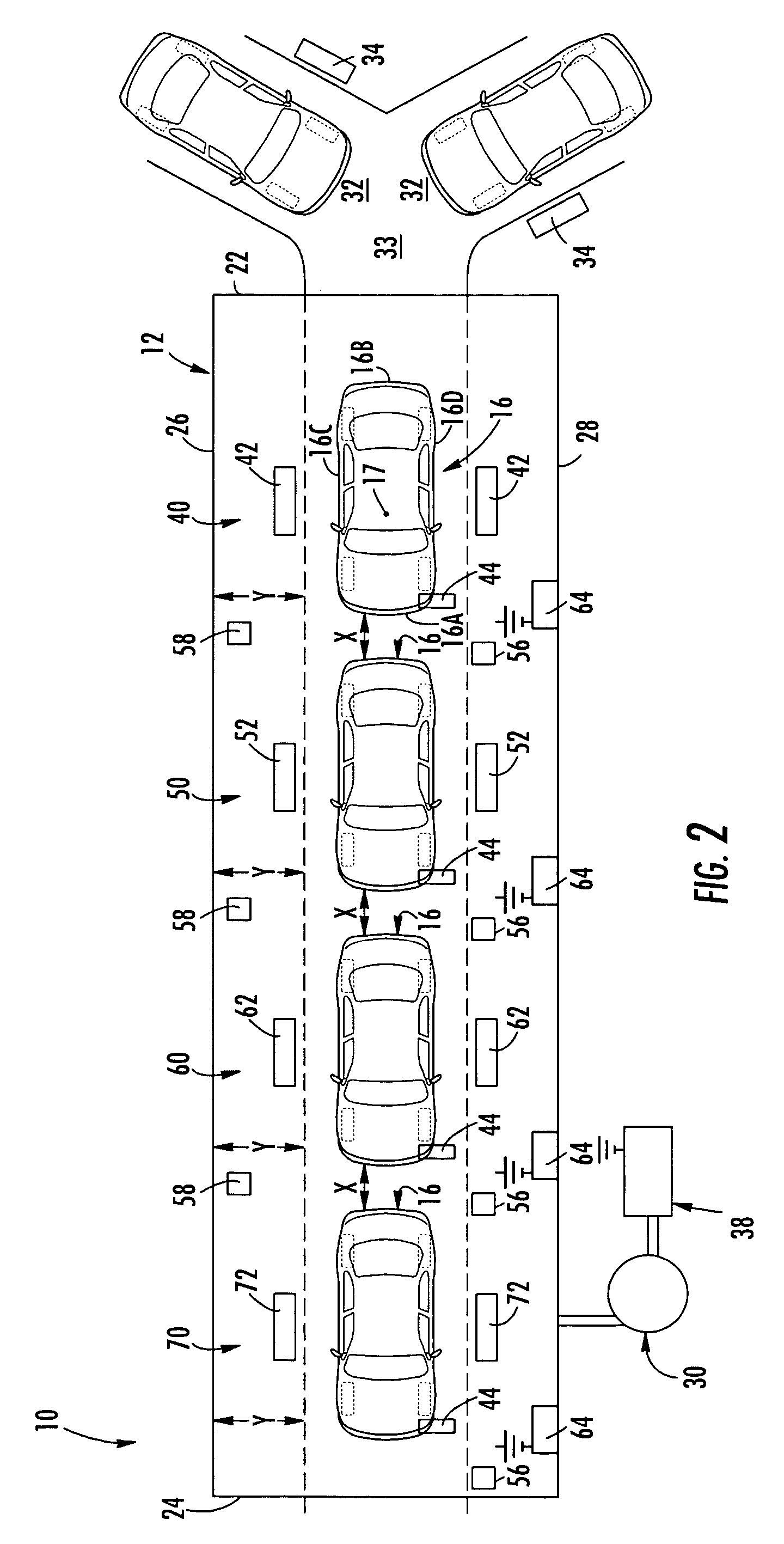Automatic car wash system
a car wash and automatic technology, applied in the direction of vehicle maintenance, vehicle cleaning, cleaning using liquids, etc., can solve the problems of limiting the hours of operation, relying on attendants, and increasing the operational cost of attending conveyors, so as to avoid the disadvantages of conveyor systems and high vehicle throughput.
- Summary
- Abstract
- Description
- Claims
- Application Information
AI Technical Summary
Benefits of technology
Problems solved by technology
Method used
Image
Examples
Embodiment Construction
[0021]The present inventions now will be described more fully hereinafter with reference to the accompanying drawings, in which some, but not all embodiments of the invention are shown. Indeed, these inventions may be embodied in many different forms and should not be construed as limited to the embodiments set forth herein; rather, these embodiments are provided so that this disclosure will satisfy applicable legal requirements. Like numbers refer to like elements throughout.
[0022]FIG. 1 shows a car wash system 10 according to one embodiment of the present invention. The system 10 includes a tunnel or enclosure 12 having entrance 22, exit 24, and sidewalls 26, 28. The enclosure 12 defines an elongate path of travel 20 for one or more vehicles 16 to travel upon. In one embodiment, the elongate path of travel 20 extends at least 20 feet, although the actual length may be more or less as desired. The elongate path of travel 20 preferably is at least as long as the length of the enclos...
PUM
 Login to View More
Login to View More Abstract
Description
Claims
Application Information
 Login to View More
Login to View More - R&D
- Intellectual Property
- Life Sciences
- Materials
- Tech Scout
- Unparalleled Data Quality
- Higher Quality Content
- 60% Fewer Hallucinations
Browse by: Latest US Patents, China's latest patents, Technical Efficacy Thesaurus, Application Domain, Technology Topic, Popular Technical Reports.
© 2025 PatSnap. All rights reserved.Legal|Privacy policy|Modern Slavery Act Transparency Statement|Sitemap|About US| Contact US: help@patsnap.com



